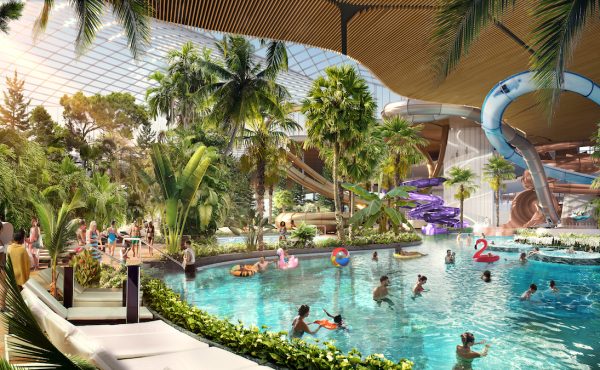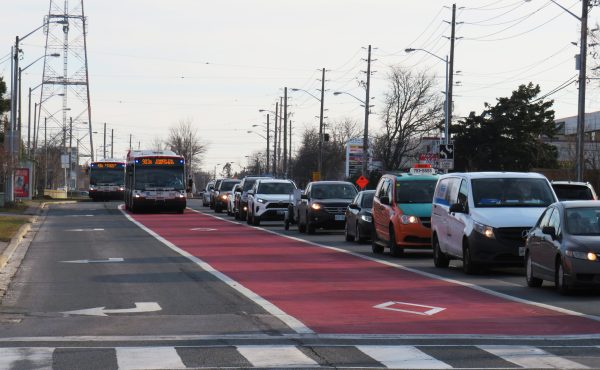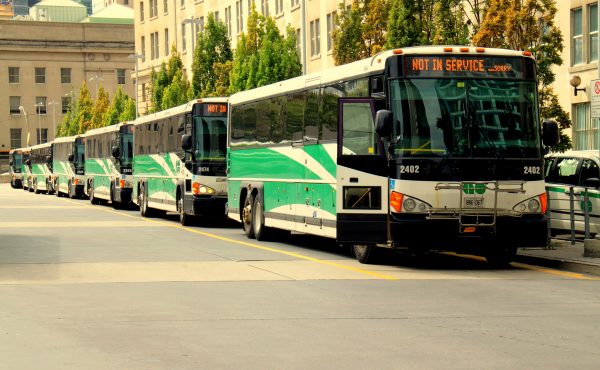An interesting poll was released today (PDF) by Leger Marketing that looks at Torontonian’s opinions about our city’s transit options and plans. It shows that voters are not particularly supportive of the transit plan Rob Ford campaigned on (subways only, no light rail). Rather, they are ok with light rail but like the idea of putting a greater proportion of planned rail transit underground. It suggests that Ford has a lot of room to compromise on his transit plans without alienating voters.
Some of the results appear contradictory, but they are in part explained by a drift in opinion between abstract preferences and the concrete situation (as well, apparently, as a preference for agreeing with statements). For example, in the abstract, only 8% disagreed with the statement “Smart transit planning is done for the long term and should not be changed every time a new government is elected” (with 89% in favour). But when faced with a more positive presentation of the concrete situation we are now in, 26% agreed with the statement “We should build subways because it’s what Rob Ford promised in the election, and he has a mandate, even if it means stopping the projects that are underway.”
This drift went the other way, politically, when it came to preferences between subways versus light rail. When asked straight up to choose between the two modes, 44% chose subways and 40% chose light rail. But when taking the current situation into consideration more explicitly, including the question of timing and costs, support for keeping at least parts of the Transit City light rail plan was strong.
For example,
63% agreed: “Toronto should not cancel or change the current plan if it means higher costs or a longer wait to get new transit”
83% agreed: “Toronto should have a mix of subways, light-rail, streetcars and buses, depending on the number of people living in the neighbourhoods”
65% agreed: “The TTC’s Transit City plan was an effective step forward in helping meet Toronto’s transit needs”
67% did not agree: “We should build subways because it’s what Rob Ford promised in the election, and he has a mandate, even if it means stopping the projects that are underway”
On the other hand, there was certainly support for shifting the emphasis and building more subways into the plans. 55% agreed with “We should build subways in Toronto, because underground transit would be less disruptive to cars, even if it costs more and takes longer to build.”
But the plurality of the support was for a shifting emphasis, not for getting rid of Transit City/light rail completely. 44% supported “Keep the light-rail lines, but move more of them underground” versus 33% who wanted to keep Transit City unchanged. But perhaps the most striking finding was that only %15 supported the option Rob Ford campaigned on, “Stop the light-rail lines and build subways instead”.
Clearly voters did not make their choice for Mayor based on transit plans. George Smitherman’s transit plan was pretty much what the plurality chose, Transit City with more subways, but that didn’t get him the votes he needed. And few voters were fully in sympathy with Rob Ford’s transit plans, but they voted for him for other reasons.
So the upshot is, there is lots of room for Mayor Ford to compromise on his transit plan. It wasn’t the reason most of his supporters voted for him, and most of them are not particularly attached to it.




4 comments
No comments yet?!?
I think one of the biggest problems is that most people have no idea what Transit City is, and this goes for its supporters as well. Yes, you have people who believe that it will be the exact same thing as St. Clair, with narrowed arterials and slow streetcars. But at the same time, we have supporters who believe it will be like like most LRTs with high speeds and long stretches between stops.
Unfortunately, both of these assumptions are wrong.
Sheppard and other arterials will continue to have the same number of through lanes as before, just that the road will now be widened to accommodate the extra rail tracks rather than accommodate extra cars. Likewise, the stop placement will be at 400m, almost the same as what it is currently. While having its own lane will help speed, it will do far more to improve reliability. This stop spacing will not provide the adequate speed to make transit the better choice for suburban commuters.
Toronto is one of the finest examples of a Transit City in North America. After living there for 11 years, it is the standard that I hold all transit systems up to and experiencing the system daily, might be the single most reason I am a transportation planner today. Nowhere else compares. Keep holding the bar high, T.O.!
I think what Ben says is very true. I like public transit and think it’s essential for a city. But when it’s discussed, no one seems to know what it is exactly. Is it ‘on the street’ or is it beside the streets? How does it differ from the St. Clair project? What parts of it are underground? What’s going to be built ‘first’? – because many of us are cynical about the whole plan being implemented.
The images I have of Transit City are those posters that display an abstract map of ‘where’ the lines would be. There’s also an image of a rendering of a gleaming LRT with happy people getting on and off.
I’m surprised more supporters (let alone the city/province/metrolinx) didn’t do more to promote it – like animated videos, realistic renderings, clear Q&As. I know that TransitCity.ca has a bit of this, but it’s pretty pie-in-the-sky.
Ben, well said… This “poll” reminds me of the one done a few years ago in which people were asked to identify a preference for a Canadian Armed Forces helicopter purchase.